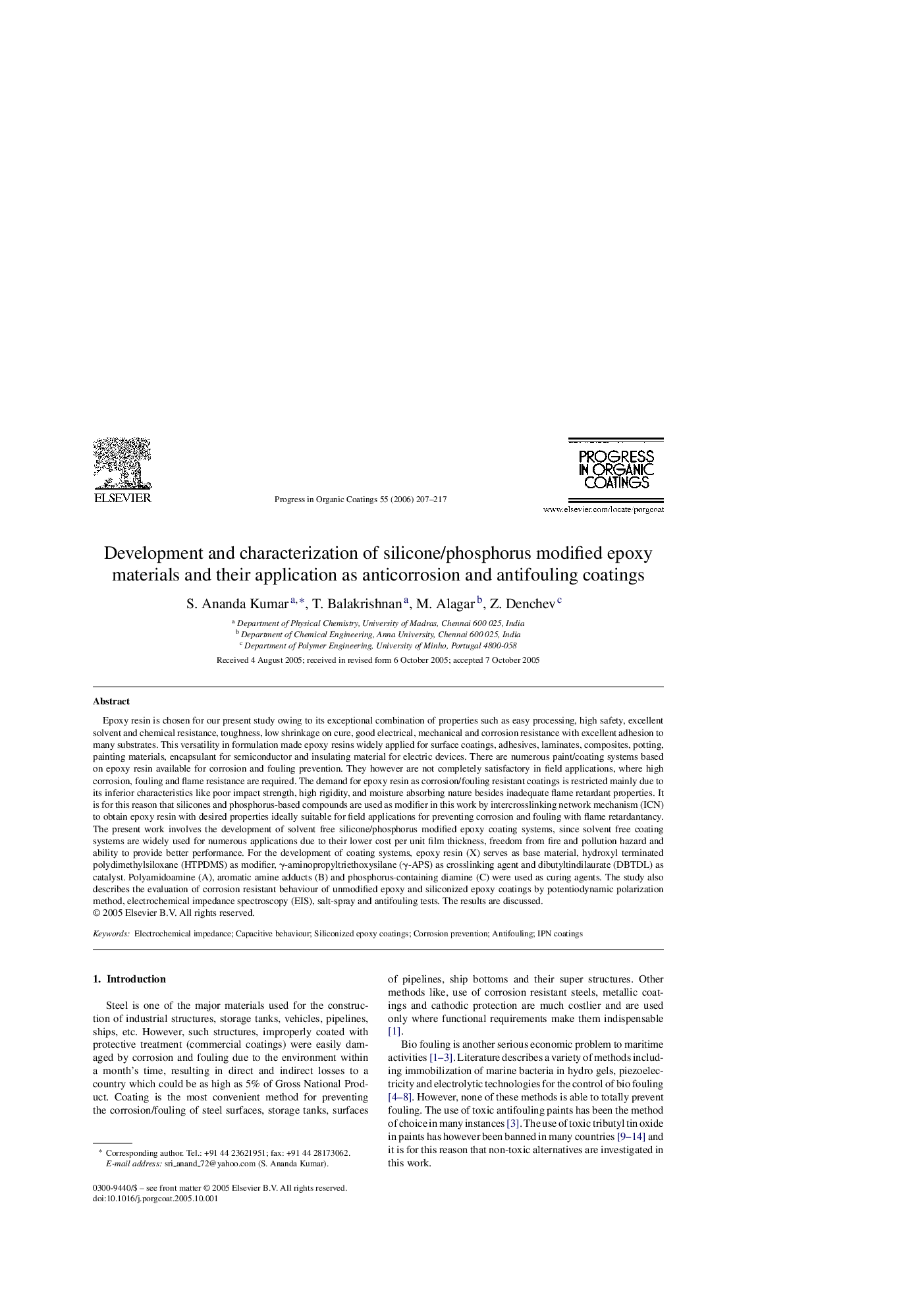| Article ID | Journal | Published Year | Pages | File Type |
|---|---|---|---|---|
| 694236 | Progress in Organic Coatings | 2006 | 11 Pages |
Epoxy resin is chosen for our present study owing to its exceptional combination of properties such as easy processing, high safety, excellent solvent and chemical resistance, toughness, low shrinkage on cure, good electrical, mechanical and corrosion resistance with excellent adhesion to many substrates. This versatility in formulation made epoxy resins widely applied for surface coatings, adhesives, laminates, composites, potting, painting materials, encapsulant for semiconductor and insulating material for electric devices. There are numerous paint/coating systems based on epoxy resin available for corrosion and fouling prevention. They however are not completely satisfactory in field applications, where high corrosion, fouling and flame resistance are required. The demand for epoxy resin as corrosion/fouling resistant coatings is restricted mainly due to its inferior characteristics like poor impact strength, high rigidity, and moisture absorbing nature besides inadequate flame retardant properties. It is for this reason that silicones and phosphorus-based compounds are used as modifier in this work by intercrosslinking network mechanism (ICN) to obtain epoxy resin with desired properties ideally suitable for field applications for preventing corrosion and fouling with flame retardantancy. The present work involves the development of solvent free silicone/phosphorus modified epoxy coating systems, since solvent free coating systems are widely used for numerous applications due to their lower cost per unit film thickness, freedom from fire and pollution hazard and ability to provide better performance. For the development of coating systems, epoxy resin (X) serves as base material, hydroxyl terminated polydimethylsiloxane (HTPDMS) as modifier, γ-aminopropyltriethoxysilane (γ-APS) as crosslinking agent and dibutyltindilaurate (DBTDL) as catalyst. Polyamidoamine (A), aromatic amine adducts (B) and phosphorus-containing diamine (C) were used as curing agents. The study also describes the evaluation of corrosion resistant behaviour of unmodified epoxy and siliconized epoxy coatings by potentiodynamic polarization method, electrochemical impedance spectroscopy (EIS), salt-spray and antifouling tests. The results are discussed.
